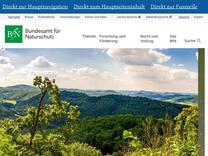Advancing Guidance on Other Effective Area Based Conservation Measures | BFN https://www.bfn.de/publikationen/hintergrundpapier/advancing-guidance-other-effective-area-based-conservation-measures
Report of the second meeting of the IUCN-WCPA task force on Other Effective Areas Based
Suchen Sie sind hier: Publikationen Advancing Guidance On Other Effective Area Based

